A Low-Cost Sustainable Energy Solution for Pristine Mountain Areas of Developing Countries
Abstract
1. Introduction
2. Design of Darrieus Type Turbine
3. Design Parameters
3.1. Effect of Design Parameters on Power Output
3.1.1. Effect of Airfoil Type
- Digit 1 gives the maximum camber as a percentage of the chord length.
- Digit 2 gives the distance of maximum camber from the airfoil leading edge (10 × digit in percent of chord length).
- Digits 3 & 4 give the maximum thickness of the airfoil as a percent of the chord.
3.1.2. Effect of Airfoil Thickness on CP
3.1.3. Effect of Airfoil Camber
3.1.4. Effect of Number of Blades
3.1.5. Effect of the Airfoil Chord Length
- Decreasing chord length improves the maximum value of C.
- The moderate value of chord length gives better performance at TSR values < 4.5.
- Larger chord lengths tend to reduce the maximum CP and turbine performance decreases rapidly at higher TSR values.
3.1.6. Effect of Turbine Radius
3.1.7. Effect of Pitch Angle
3.1.8. Effect of Turbine Height
4. Final Design Selection
Power Output of Selected Design
5. Fabrication of Turbine
6. Experimental Testing
6.1. Site Selection
6.2. Velocity & Force Measurement
7. CFD Analysis
Discussion on CFD Results
8. Comparison of Results
9. Conclusions
Author Contributions
Funding
Institutional Review Board Statement
Informed Consent Statement
Acknowledgments
Conflicts of Interest
References
- Zou, C.; Zhao, Q.; Zhang, G.; Xiong, B. Energy Revolution: From a Fossil Energy Era to a New Energy Era. Nat. Gas Ind. B 2016, 3, 1–11. [Google Scholar] [CrossRef]
- Álvarez, X.; Valero, E.; De La Torre-Rodríguez, N.; Acuña-Alonso, C. Influence of Small Hydroelectric Power Stations on River Water Quality. Water 2020, 12, 312. [Google Scholar] [CrossRef]
- Quaranta, E.; Bonjean, M.; Cuvato, D.; Nicolet, C.; Dreyer, M.; Gaspoz, A.; Rey-Mermet, S.; Boulicaut, B.; Pratalata, L.; Pinelli, M.; et al. Hydropower Case Study Collection: Innovative Low Head and Ecologically Improved Turbines, Hydropower in Existing Infrastructures, Hydropeaking Reduction, Digitalization and Governing Systems. Sustainability 2020, 12, 8873. [Google Scholar] [CrossRef]
- Laghari, A.N.; Vanham, D.; Rauch, W. The Indus Basin in the Framework of Current and Future Water Resources Management. Hydrol. Earth Syst. Sci. 2012, 16, 1063–1083. [Google Scholar] [CrossRef]
- Ahmad, Z.; Hafeez, M.; Ahmad, I. Hydrology of Mountainous Areas in the Upper Indus Basin, Northern Pakistan with the Perspective of Climate Change. Environ. Monit. Assess. 2011, 184, 5255–5274. [Google Scholar] [CrossRef] [PubMed]
- Balduzzi, F.; Bianchini, A.; Ferrara, G.; Marten, D.; Pechlivanoglou, G.; Nayeri, C.N.; Paschereit, C.O.; Drofelnik, J.; Campobasso, M.S.; Ferrari, L. Three-Dimensional Aerodynamic Analysis of a Darrieus Wind Turbine Blade Using Computational Fluid Dynamics and Lifting Line Theory. In Volume 2A: Turbomachinery; ASME International: New York, NY, USA, 2017. [Google Scholar] [CrossRef]
- Oluwatoyin, K.; Oluwasegun, A.; Alabi, A. Power Generation and Its Impacts on the Environment. J. Sci. Res. Rep. 2015, 7, 551–566. [Google Scholar] [CrossRef] [PubMed]
- Jorgenson, A.K.; Longhofer, W.; Grant, D.; Sie, A.; Giedraitis, V. The Effects of Economic and Political Integration on Power plants’ Carbon Emissions in the Post-Soviet Transition Nations. Environ. Res. Lett. 2017, 12, 044009. [Google Scholar] [CrossRef]
- Perera, F. Pollution from Fossil-Fuel Combustion Is the Leading Environmental Threat to Global Pediatric Health and Equity: Solutions Exist. Int. J. Environ. Res. Public Health 2017, 15, 16. [Google Scholar] [CrossRef]
- Sovacool, B.K. The Avian and Wildlife Costs of Fossil Fuels and Nuclear Power. J. Integr. Environ. Sci. 2012, 9, 255–278. [Google Scholar] [CrossRef]
- Lakatos, L.; Hevessy, G.; Kovács, J. Advantages and Disadvantages of Solar Energy and Wind-Power Utilization. World Futur. 2011, 67, 395–408. [Google Scholar] [CrossRef]
- Jaber, S. Environmental Impacts of Wind Energy. J. Clean Energy Technol. 2014, 251–254. [Google Scholar] [CrossRef]
- Georgilakis, P.S. Technical Challenges Associated with the Integration of Wind Power into Power Systems. Renew. Sustain. Energy Rev. 2008, 12, 852–863. [Google Scholar] [CrossRef]
- Tummala, A.; Velamati, R.K.; Sinha, D.K.; Indraja, V.; Krishna, V.H. A Review on Small Scale Wind Turbines. Renew. Sustain. Energy Rev. 2016, 56, 1351–1371. [Google Scholar] [CrossRef]
- Owusu, P.A.; Asumadu-Sarkodie, S. A Review of Renewable Energy Sources, Sustainability Issues and Climate Change Mitigation. Cogent Eng. 2016, 3, 1167990. [Google Scholar] [CrossRef]
- Topić, D.; Vezmar, S.; Spajić, A.; Šljivac, D.; Jozsa, L. Positive and Negative Impacts of Renewable Energy Sources. Int. J. Electr. Comput. Eng. Syst. 2014, 5, 15–23. [Google Scholar]
- Arnaiz, M.; Cochrane, T.; Calizaya, A.; Shrestha, M. A Framework for Evaluating the Current Level of Success of Micro-Hydropower Schemes in Remote Communities of Developing Countries. Energy Sustain. Dev. 2018, 44, 55–63. [Google Scholar] [CrossRef]
- Kaunda, C.S.; Kimambo, C.Z.; Nielsen, T.K. Potential of Small-Scale Hydropower for Electricity Generation in Sub-Saharan Africa. ISRN Renew. Energy 2012, 2012, 1–15. [Google Scholar] [CrossRef]
- Jenniches, S. Assessing the Regional Economic Impacts of Renewable Energy Sources—A Literature Review. Renew. Sustain. Energy Rev. 2018, 93, 35–51. [Google Scholar] [CrossRef]
- Hirsch, A.; Parag, Y.; Guerrero, J. Microgrids: A Review of Technologies, Key Drivers, and Outstanding Issues. Renew. Sustain. Energy Rev. 2018, 90, 402–411. [Google Scholar] [CrossRef]
- Mariam, L.; Basu, M.; Conlon, M.F. A Review of Existing Microgrid Architectures. J. Eng. 2013, 2013, 1–8. [Google Scholar] [CrossRef]
- Ali, A.; Li, W.; Hussain, R.; He, X.; Williams, B.W.; Memon, A.H. Overview of Current Microgrid Policies, Incentives and Barriers in the European Union, United States and China. Sustainability 2017, 9, 1146. [Google Scholar] [CrossRef]
- Hossain, E.; Kabalci, E.; Bayindir, R.; Perez, R. A Comprehensive Study on Microgrid Technology. Int. J. Renew. Energy Res. 2014, 4, 1094–1104. [Google Scholar] [CrossRef]
- Khan, M.; Bhuyan, G.; Iqbal, M.; Quaicoe, J. Hydrokinetic Energy Conversion Systems and Assessment of Horizontal and Vertical Axis Turbines for River and Tidal Applications: A Technology Status Review. Appl. Energy 2009, 86, 1823–1835. [Google Scholar] [CrossRef]
- Elbatran, A.H.; Yaakob, O.; Ahmed, Y.; Shabara, H. Operation, Performance and Economic Analysis of Low Head Micro-Hydropower Turbines for Rural and Remote Areas: A Review. Renew. Sustain. Energy Rev. 2015, 43, 40–50. [Google Scholar] [CrossRef]
- Fraenkel, P.; Paish, O.; Bokalders, V.; Harvey, A.; Brown, A.; Edwards, R. Micro-Hydro Power: A Guide for Development Workers; IT Publications: London, UK, 1999; Available online: https://www.amazon.com/Micro-Hydro-Power-Guide-Development-Workers/Dp/1853390291 (accessed on 28 January 2021).
- Chehouri, A.; Younes, R.; Ilinca, A.; Perron, J. Review of Performance Optimization Techniques Applied to Wind Turbines. Appl. Energy 2015, 142, 361–388. [Google Scholar] [CrossRef]
- Howell, R.; Qin, N.; Edwards, J.; Durrani, N. Wind Tunnel and Numerical Study of a Small Vertical Axis Wind Turbine. Renew. Energy 2010, 35, 412–422. [Google Scholar] [CrossRef]
- Chen, W.-H.; Chen, C.-Y.; Huang, C.-Y.; Hwang, C.-J. Power Output Analysis and Optimization of Two Straight-Bladed Vertical-Axis Wind Turbines. Appl. Energy 2017, 185, 223–232. [Google Scholar] [CrossRef]
- Shukla, V.; Kaviti, A.K. Performance Evaluation of Profile Modifications on Straight-Bladed Vertical Axis Wind Turbine by Energy and Spalart Allmaras Models. Energy 2017, 126, 766–795. [Google Scholar] [CrossRef]
- Islam, M.; Ting, D.; Fartaj, A. Aerodynamic Models for Darrieus-Type Straight-Bladed Vertical Axis Wind Turbines. Renew. Sustain. Energy Rev. 2008, 12, 1087–1109. [Google Scholar] [CrossRef]
- Beri, H.; Yao, Y. Double Multiple Streamtube Model and Numerical Analysis of Vertical Axis Wind Turbine. Energy Power Eng. 2011, 3, 262–270. [Google Scholar] [CrossRef]
- Dai, Y.M.; Gardiner, N.; Sutton, R.; Dyson, P.K. Hydrodynamic Analysis Models for the Design of Darrieus-Type Vertical-Axis Marine Current Turbines. Proc. Inst. Mech. Eng. Part M J. Eng. Marit. Environ. 2011, 225, 295–307. [Google Scholar] [CrossRef]
- Hirsch, I.H.; Mandal, A.C. A Cascade Theory for the Aerodynamic Performance of Darrieus Wind Turbines. Wind Eng. 1987, 11, 164–175. [Google Scholar]
- Paraschivoiu, I. Wind Turbine Design with Emphasis on Darrieus Concept, 1st ed.; Presses Internationales Polytechnique: Paris, France, 2002; Available online: https://www.amazon.com/Turbine-Design-Emphasis-Darrieus-Concept/Dp/2553009313 (accessed on 28 January 2021).
- Komass, T. Mathematical Modelling and Calculation of Vertical Axis Wind Turbine Pitch System Using Matlab Tools. AASCIT J. Energy 2015, 2, 9–15. [Google Scholar]
- Bhutta, M.M.A.; Hayat, N.; Farooq, A.U.; Ali, Z.; Jamil, S.R.; Hussain, Z. Vertical Axis Wind Turbine—A Review of Various Configurations and Design Techniques. Renew. Sustain. Energy Rev. 2012, 16, 1926–1939. [Google Scholar] [CrossRef]
- Ma, N.; Lei, H.; Han, Z.; Zhou, D.; Bao, Y.; Zhang, K.; Zhou, L.; Chen, C. Airfoil Optimization to Improve Power Performance of a High-Solidity Vertical Axis Wind Turbine at a Moderate Tip Speed Ratio. Energy 2018, 150, 236–252. [Google Scholar] [CrossRef]
- Miller, M.A.; Duvvuri, S.; Brownstein, I.; Lee, M.; Dabiri, J.O.; Hultmark, M. Vertical-Axis Wind Turbine Experiments at Full Dynamic Similarity. J. Fluid Mech. 2018, 844, 707–720. [Google Scholar] [CrossRef]
- Li, Q.; Maeda, T.; Kamada, Y.; Murata, J.; Furukawa, K.; Yamamoto, M. Effect of Number of Blades on Aerodynamic Forces on a Straight-Bladed Vertical Axis Wind Turbine. Energy 2015, 90, 784–795. [Google Scholar] [CrossRef]
- Brusca, S.; Lanzafame, R.; Messina, M. Design of a Vertical-Axis Wind Turbine: How the Aspect Ratio Affects the turbine’s Performance. Int. J. Energy Environ. Eng. 2014, 5, 333–340. [Google Scholar] [CrossRef]
- Bedon, G.; Castelli, M.R.; Benini, E. Optimization of a Darrieus Vertical-Axis Wind Turbine Using Blade Element—Momentum Theory and Evolutionary Algorithm. Renew. Energy 2013, 59, 184–192. [Google Scholar] [CrossRef]
- Ferreira, C.S.; Barone, M.F.; Zanon, A.; Kemp, R.; Giannattasio, P. Airfoil Optimization for Stall Regulated Vertical Axis Wind Turbines. In Proceedings of the 33rd Wind Energy Symposium, Kissimmee, FL, USA, 5–9 January 2015. [Google Scholar] [CrossRef]
- Marten, D.; Wendler, J. QBlade Guidelines v0.6. 2013. Available online: http://q-blade.org/project_images/files/guidelines_v06.pdf (accessed on 10 April 2015).
- Sheikh, S.R.; Koreshi, Z.U.; Rauf, U.; Khalil, S.; Aziz, U. A Novel Blade-Pitching Mechanism Design and Testing for Micro Vertical-Axis Water Turbines. Tech. J. 2020, 25, 61–68. [Google Scholar]
- Hwang, I.S.; Lee, Y.H.; Kim, S.J. Optimization of Cycloidal Water Turbine and the Performance Improvement by Individual Blade Control. Appl. Energy 2009, 86, 1532–1540. [Google Scholar] [CrossRef]
- Elkhoury, M.; Kiwata, T.; Aoun, E. Experimental and Numerical Investigation of a Three-Dimensional Vertical-Axis Wind Turbine with Variable-Pitch. J. Wind. Eng. Ind. Aerodyn. 2015, 139, 111–123. [Google Scholar] [CrossRef]
- Fuentes, J.E.; Moya, F.D.; Montoya, O.D. Method for Estimating Solar Energy Potential Based on Photogrammetry from Unmanned Aerial Vehicles. Electronics 2020, 9, 2144. [Google Scholar] [CrossRef]
- Sheikh, S.R.; Sheikh, H.; Koreshi, Z.U. Emerging Smart Community Concept and Microgrid Technology—A Study of Lagging Skill Development in Pakistan. Int. J. Train. Res. 2019, 17 (Suppl. S1), 170–181. [Google Scholar] [CrossRef]



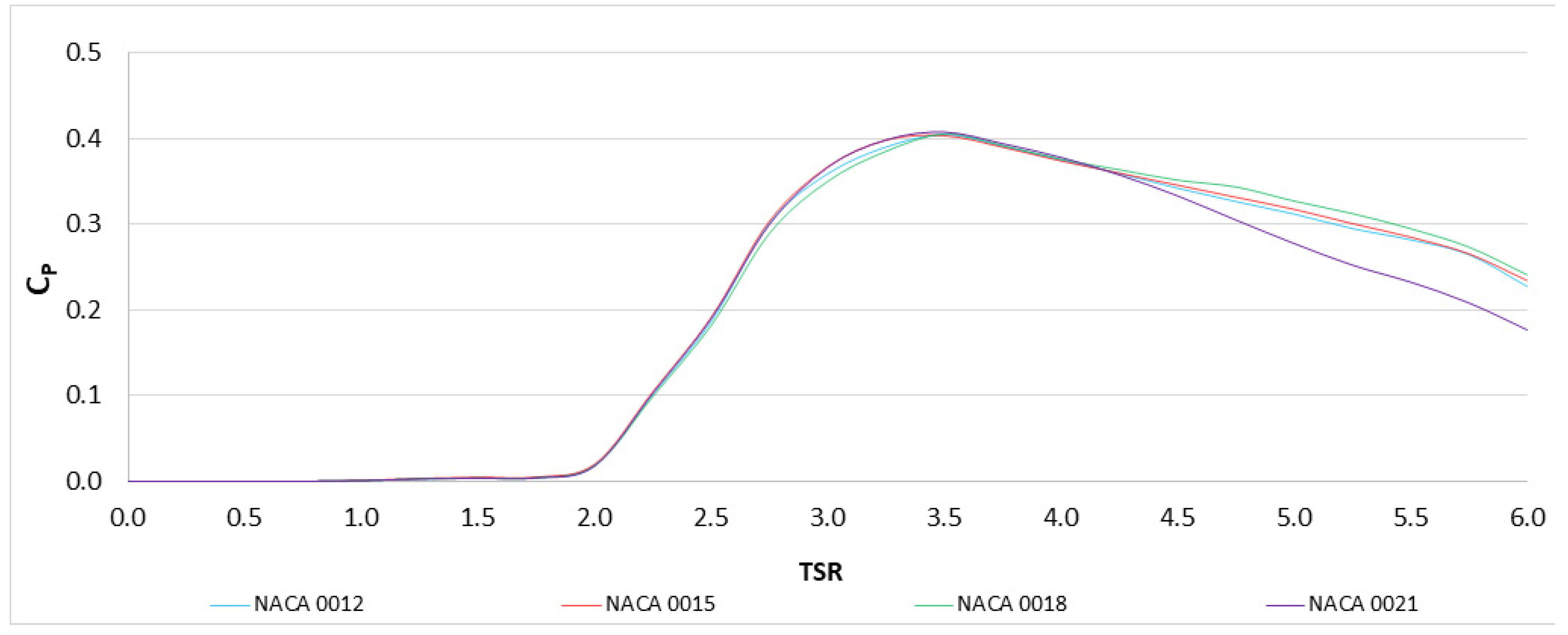


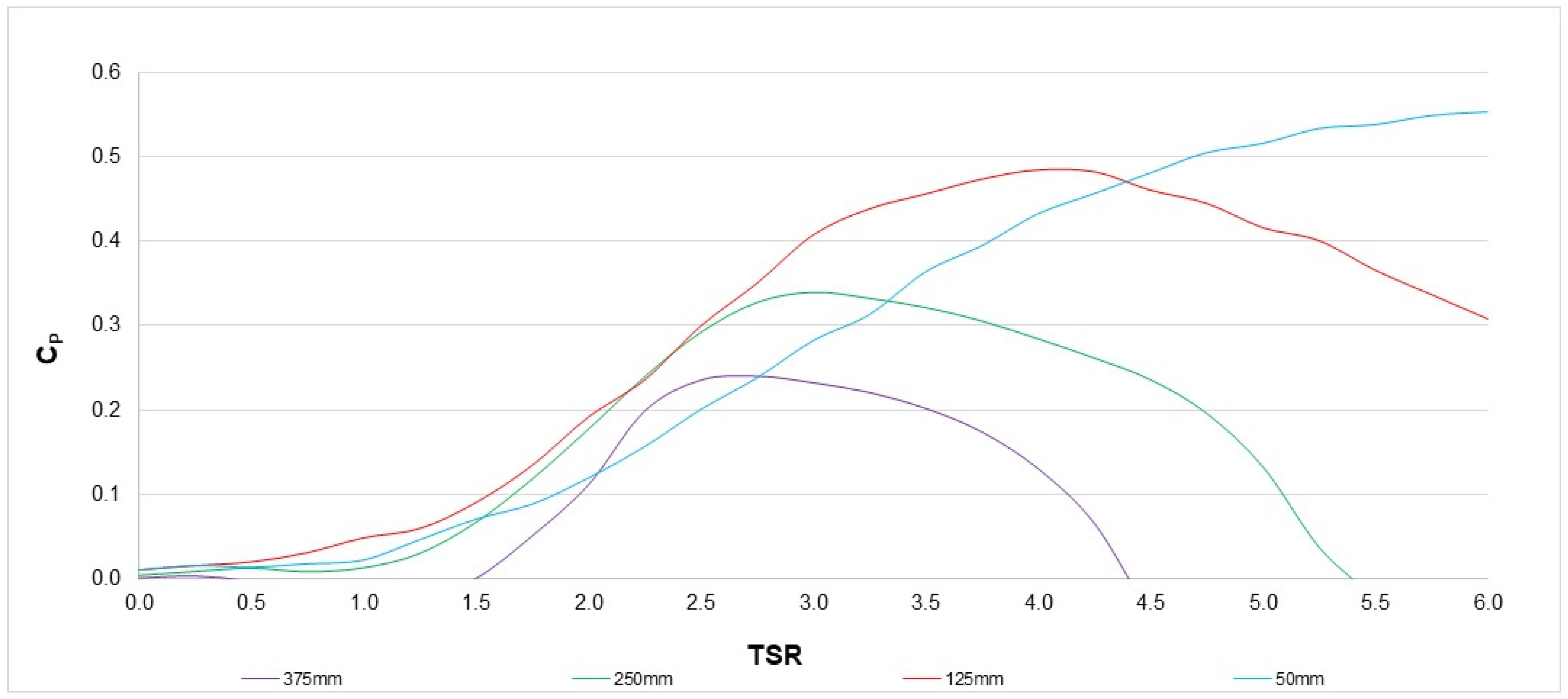

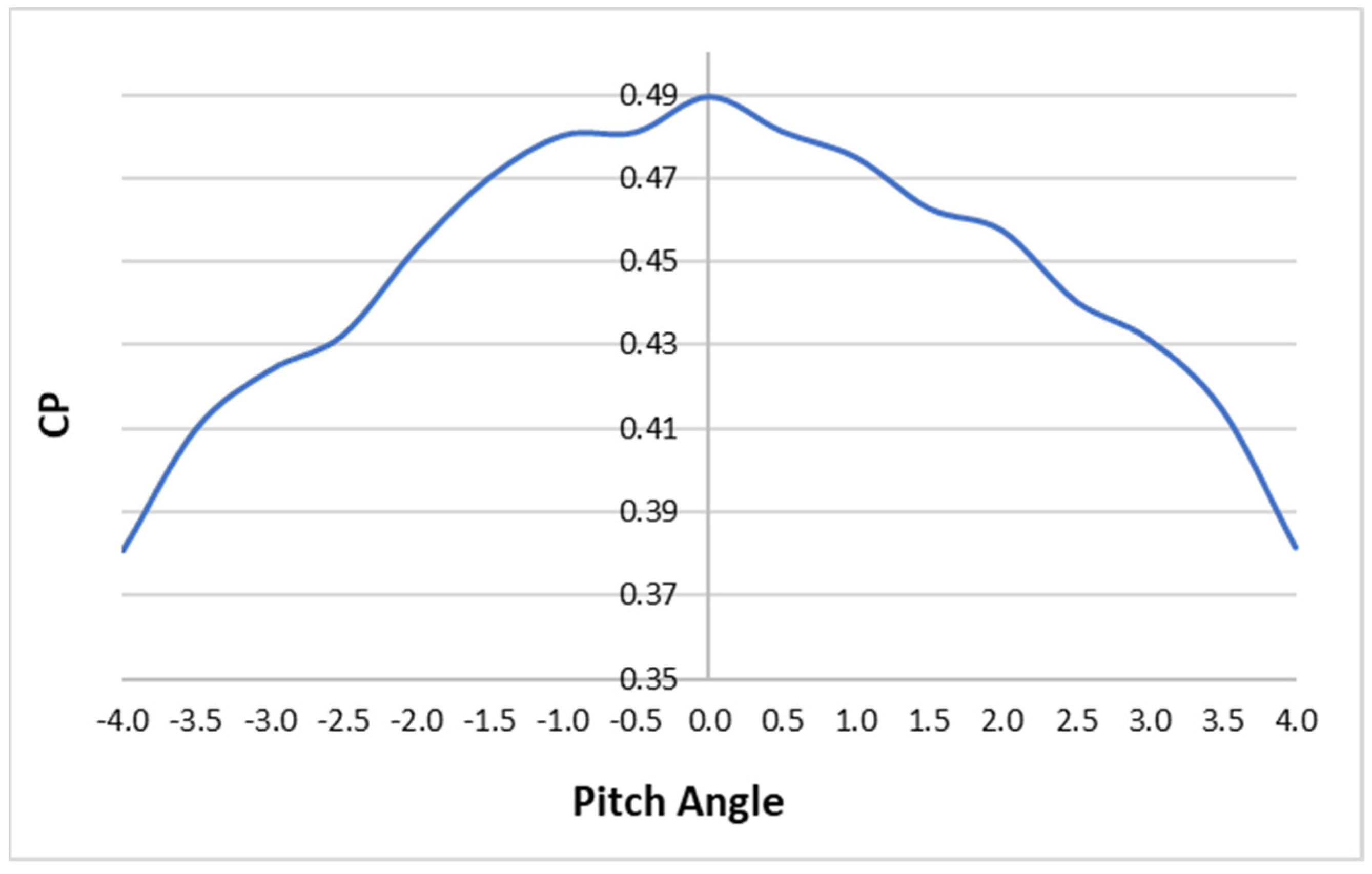


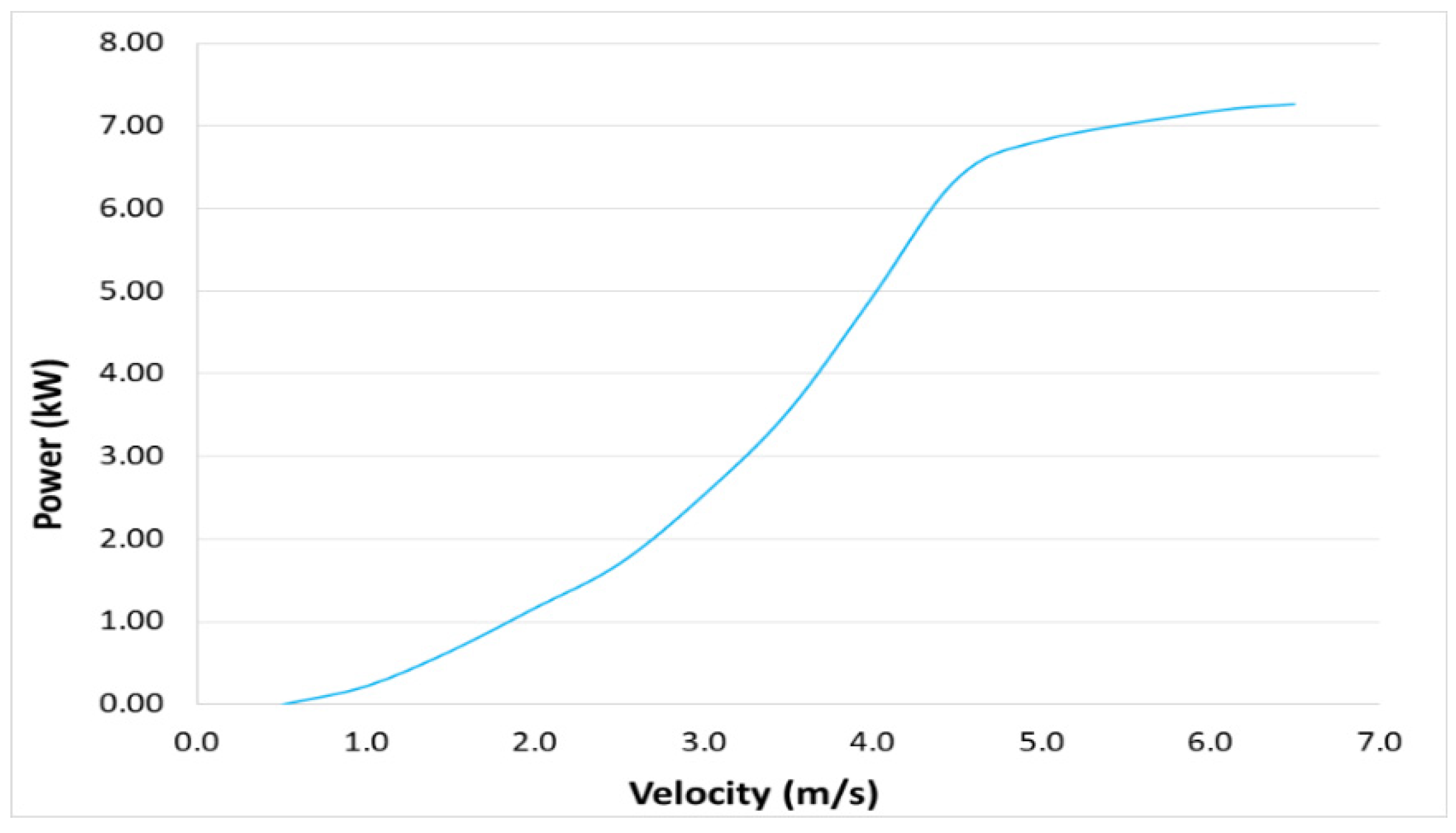
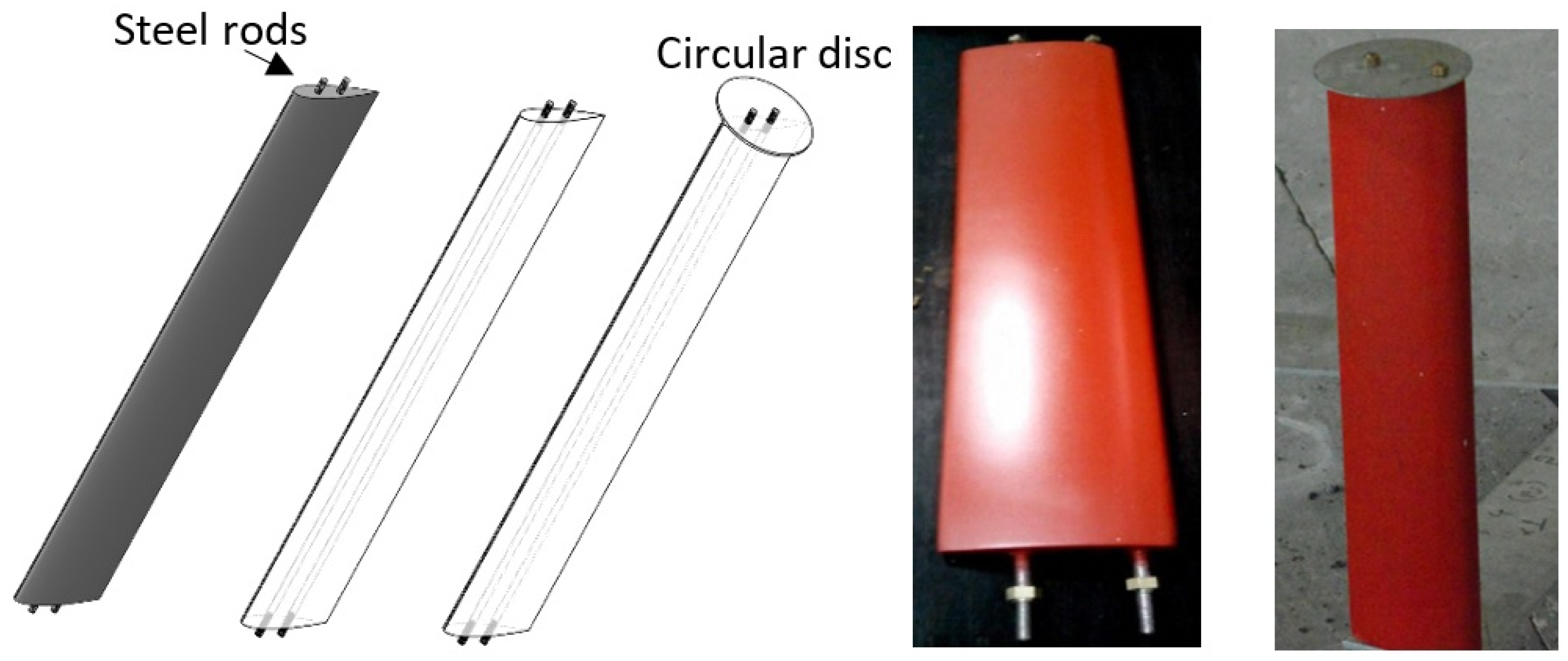

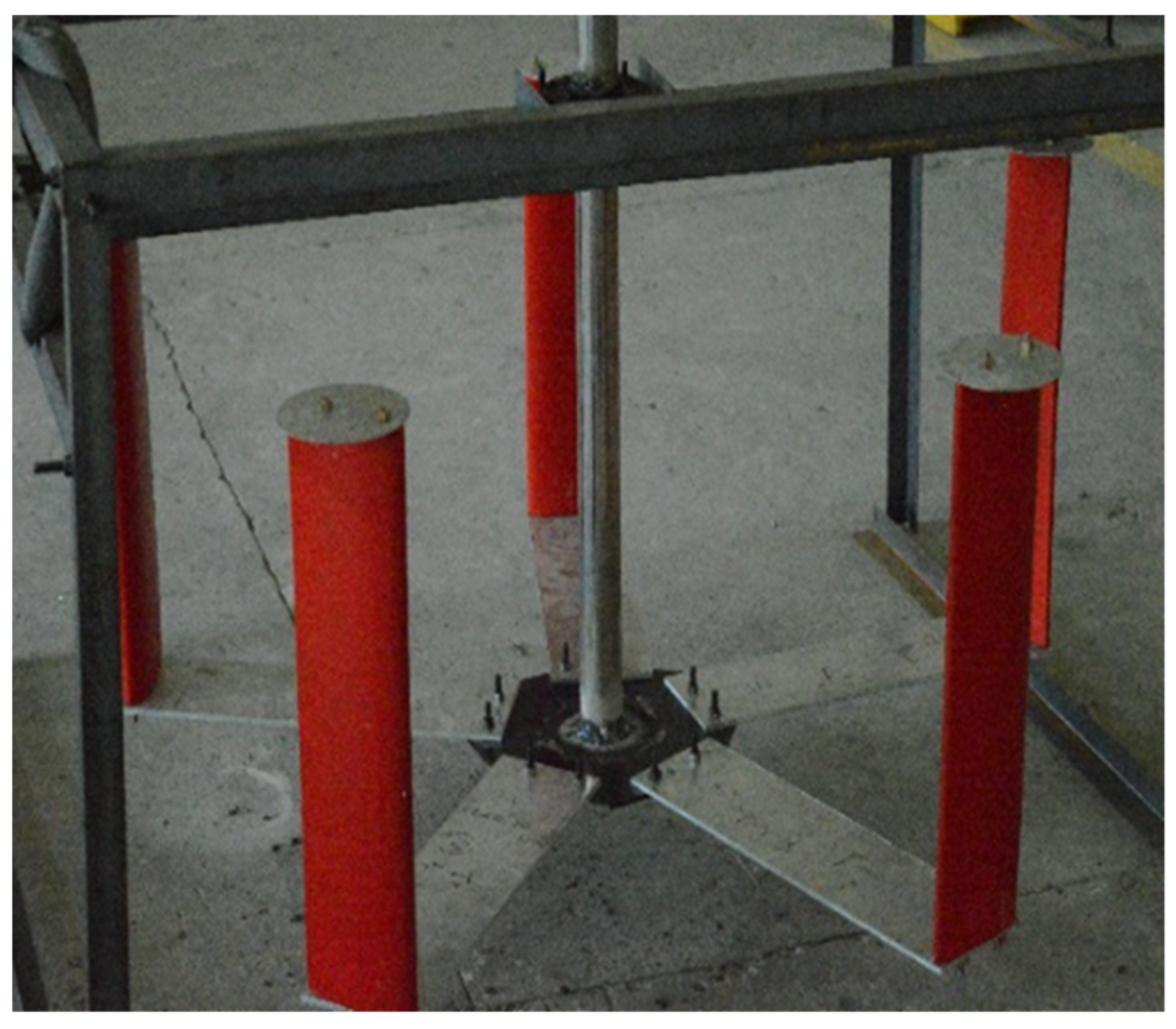

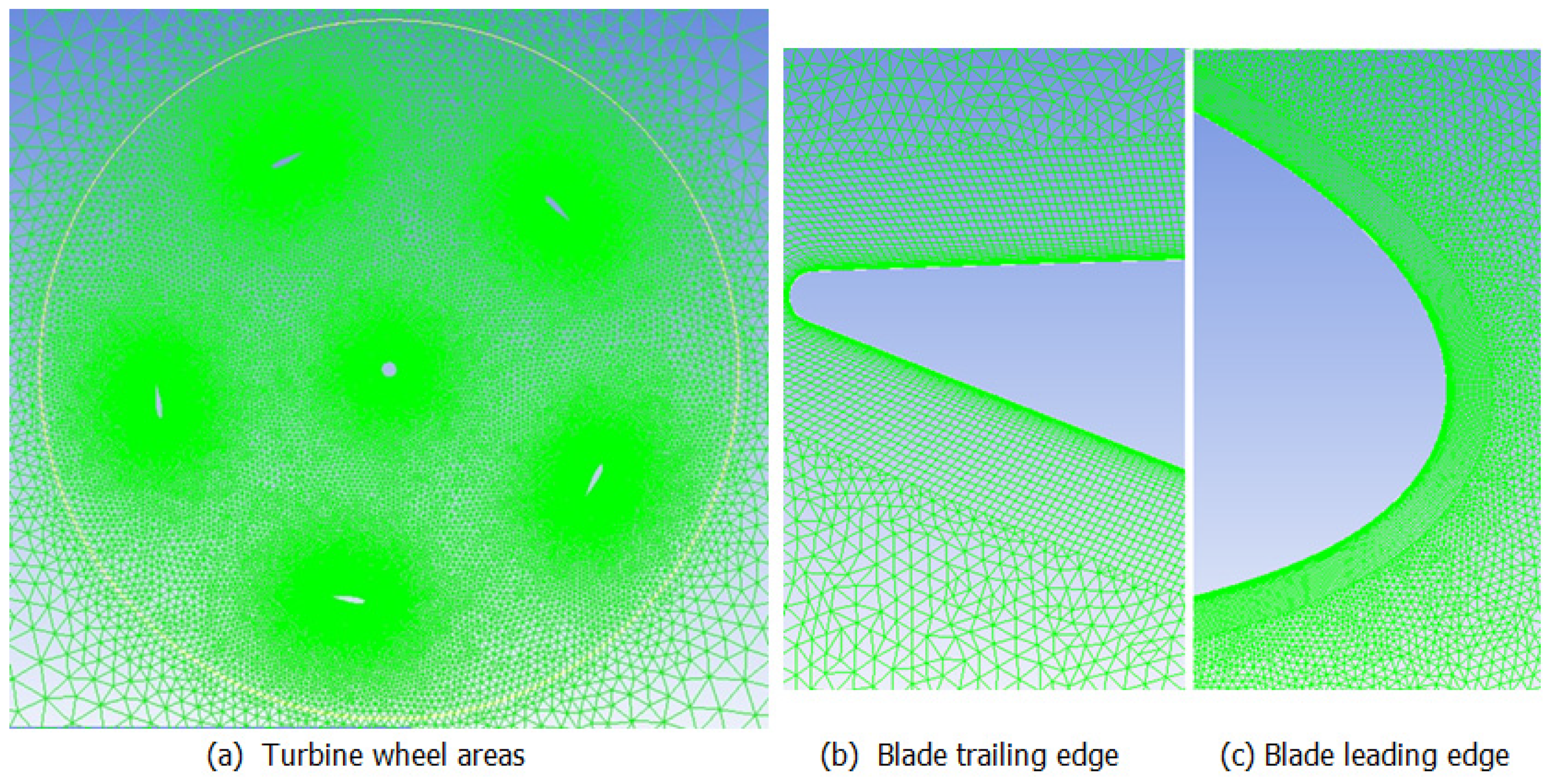



| River and Location | Jan | Feb | Mar | Apr | May | Jun | Jul | Aug | Sep | Oct | Nov | Dec |
|---|---|---|---|---|---|---|---|---|---|---|---|---|
| Jhelum, Azad Pattan | 216 | 359 | 722 | 1336 | 1712 | 1740 | 1410 | 999 | 623 | 355 | 265 | 234 |
| Snyok, Yogo | 52 | 46 | 43 | 46 | 109 | 476 | 1249 | 1309 | 546 | 167 | 101 | 77 |
| Hunza, Dainyor | 52 | 46 | 43 | 74 | 186 | 587 | 1107 | 1083 | 494 | 167 | 73 | 63 |
| Chitra, Chitral | 80 | 67 | 74 | 95 | 221 | 486 | 824 | 734 | 382 | 174 | 111 | 80 |
| Gilgit, Gilgit | 66 | 56 | 43 | 71 | 224 | 706 | 908 | 671 | 358 | 132 | 108 | 87 |
| Shigar, Shigar | 18 | 14 | 11 | 39 | 71 | 329 | 737 | 696 | 334 | 94 | 49 | 32 |
| Astore, Doyian | 28 | 25 | 25 | 60 | 186 | 371 | 389 | 253 | 139 | 66 | 49 | 38 |
| Swat, Kalam | 14 | 14 | 23 | 50 | 130 | 253 | 249 | 166 | 90 | 38 | 24 | 21 |
| Average flowrate per month | 66 | 78 | 123 | 221 | 355 | 618 | 859 | 739 | 371 | 149 | 97 | 79 |
| Average winter months flow | 89 | |||||||||||
| Average summer months flow | 473 | |||||||||||
| Airfoil | NACA 0018 |
|---|---|
| Chord length | 0.125 m |
| Number of blades | 5 |
| Height | 0.75 m |
| Radius | 0.75 m |
| Pitch angle | 0 deg |
| Velocity | Channel Depth | Channel Width | Height of Blade Immersed in Water | |
|---|---|---|---|---|
| Site 1 | 1.50 m/s | 1.10 m | 22.5 m | 0.75 m |
| Site 2 | 1.67 m/s | 1.00 m | 22.5 m | 0.75 m |
| Site 3 | 1.67 m/s | 0.65 m | 22.5 m | 0.50 m |
| Mesh Size (Nodes) | Cm |
|---|---|
| 588,111 | 0.1607 |
| 648,681 | 0.1791 |
| 729,756 | 0.1805 |
| Time-Step (s) | deg/Tstep | Cm |
|---|---|---|
| 0.00378789 | 1.00 | 0.1588 |
| 0.00284091 | 0.75 | 0.1803 |
| 0.00189394 | 0.50 | 0.1812 |
| DMST Model Results | Experimental Results | CFD Results | % Difference | ||||||||
|---|---|---|---|---|---|---|---|---|---|---|---|
| Site | Vel (m/s) | RPM | Power output (Watts) | RPM | Measured force (N) | Torque (N-m) | Power output (Watts) | RPM | Power output (Watts) | Expt. vs. DMST | Expt. vs. CFD |
| 1 | 1.5 | 51 | 670 | 44 | 147 | 110.3 | 508 | 44 | 524.1 | 24.20% | 3.10% |
| 2 | 1.7 | 57 | 950 | 48 | 209 | 156.8 | 787.9 | 48 | 799.5 | 17.10% | 1.50% |
Publisher’s Note: MDPI stays neutral with regard to jurisdictional claims in published maps and institutional affiliations. |
© 2021 by the authors. Licensee MDPI, Basel, Switzerland. This article is an open access article distributed under the terms and conditions of the Creative Commons Attribution (CC BY) license (https://creativecommons.org/licenses/by/4.0/).
Share and Cite
Sheikh, S.R.; Shah, S.H.R.; Rauf, U.; Rauf, F.; Kausar, Z.; Aziz, U.; Shah, M.F.; Yaqoob, H.; Niazi, M.B.K. A Low-Cost Sustainable Energy Solution for Pristine Mountain Areas of Developing Countries. Energies 2021, 14, 3160. https://doi.org/10.3390/en14113160
Sheikh SR, Shah SHR, Rauf U, Rauf F, Kausar Z, Aziz U, Shah MF, Yaqoob H, Niazi MBK. A Low-Cost Sustainable Energy Solution for Pristine Mountain Areas of Developing Countries. Energies. 2021; 14(11):3160. https://doi.org/10.3390/en14113160
Chicago/Turabian StyleSheikh, Shakil Rehman, Syed Hassan Raza Shah, Umar Rauf, Fawad Rauf, Zareena Kausar, Umair Aziz, Muhammad Faizan Shah, Haseeb Yaqoob, and Muhammad Bilal Khan Niazi. 2021. "A Low-Cost Sustainable Energy Solution for Pristine Mountain Areas of Developing Countries" Energies 14, no. 11: 3160. https://doi.org/10.3390/en14113160
APA StyleSheikh, S. R., Shah, S. H. R., Rauf, U., Rauf, F., Kausar, Z., Aziz, U., Shah, M. F., Yaqoob, H., & Niazi, M. B. K. (2021). A Low-Cost Sustainable Energy Solution for Pristine Mountain Areas of Developing Countries. Energies, 14(11), 3160. https://doi.org/10.3390/en14113160








